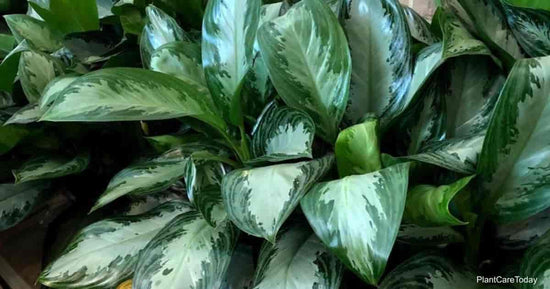The simple guide to succulent + cacti care.
Succulents are notorious for being incredibly easy and no-fuss plants to care for. Cacti, being a type of succulent, are likewise very low-maintenance. Even so, many caretakers are familiar with the confusion of losing one from their collection. We’re here with a straightforward care guide to debunk the myths and mistakes of succulent care. The info in this guide applies to:
- Aloe Vera
- Firestick Pencil Cactus
- Jade Plants
- Golden Barrel Cacti
- Prickly Pear Cactus
- Sansevierias (Snake Plants)
- Succulent Set
- Window Cactus Set
- ZZ Plants
- Just about any other succulent or cactus
UNDERSTANDING SUCCULENT NEEDS
Succulents are native to desert-like areas that are warm, dry, and receive relatively little rainfall. Their identifying quality is thick foliage that stores water (a Jade Plant, for example). Cacti are a type of succulent that typically have no leaves, so water is instead stored in the thick walls of the stem(s). This adaptation allows succulents to survive extreme conditions.
Now that you understand how succulents survive in nature, the goal is to replicate this natural environment under the best care possible indoors. To do this, you’ll need to:
- Water infrequently yet mindfully
- Provide the brightest light your home offers. Some succulents are tolerant of low and direct light
- Keep away from cold rooms, drafts, and humidity (including bathrooms!)
HOW OFTEN SHOULD I WATER MY SUCCULENT?
Perhaps the #1 question and the most important, as succulents have their own water storage system and thus, are vulnerable to being overwatered. How often you water your succulent will be based on six factors:
- The size of the succulent - Plants in a 4-inch pot will dry out faster than in a 6-inch pot
- Brightness - Soil that receives many hours of bright or direct sun will dry faster
- Quality of Soil - Most succulent-specific soil enhances drainage and aeration
- Pot Drainage - Tightly packed soil and planters without drainage will dry slowly
- Indoor Airflow - Soil needs circulation to dry efficiently + prevent fungus growth
- Temperature - Maintain a stable temperature between 65º-90º
We recommend watering your succulent only after the soil has completely dried. This is the best way to mimic its native desert climate. During the growing season of spring and summer, you’ll water more frequently to keep up with its growth. Gradually slow how often you water in the fall. Over the winter, some can go every other month or longer without water.
Healthy succulents have firm leaves and stems. Mushy, soft leaves or stems on a succulent are a sign of overwatering. An underwatered succulent will show dried, brown, or shriveled parts. Take regular notice of your succulent’s appearance to learn precisely what your succulent needs and when.
THE BEST SOIL FOR SUCCULENTS
The key to healthy soil is great drainage. Cacti and succulent-specific soil mixes are a great start. You can also add sand, gravel, perlite, or pumice to enhance how well water flows out of the pot. These plants don’t need much fertilizer, though you can offer a diluted feeding once or twice throughout the growing season.
REPOTTING
Most succulents and cacti can be repotted about once a year for their first two years. After potting up twice (a maximum of 2 inches each time), these mature plants can go as long as three years without needing a larger planter. Slowly increasing pot size is important to avoid overwhelming the root system. To keep fast growers at a manageable size, just prune away overgrowth. If your plant grows a pup (smaller, identical plant), these can be pruned with a clean knife and repotted. Handle succulents with spikes and needles carefully using thick gardening gloves.
PROPAGATING
Propagate succulent cuttings in a soilless mixture of coco coir, sand, and perlite or pumice. Cuttings don’t have the water storage of their parent plant and require slightly moist soil to push out roots. To ensure you’re not overwatering, use a mist bottle to wet the soil instead of pouring water. If your planter is big enough, you can also repot your leaf or stem cutting directly into the parent plant’s soil.
After 5+ weeks of regularly tending to your propagated cutting, give a gentle tug to feel if roots have anchored into the soil. If so, you can reduce the soil moisture but keep in mind that it will still need more care than an established succulent.
COMMON MISTAKES + TIPS
Many succulents symbolize resilience and good fortune. Witnessing how hardy they truly are will draw inspiration from their adaptability and strength. Even still, these plants require tender care. At some point, we’ll all be guilty of at least one of these common mistakes:
OVER-NEGLECTING YOUR SUCCULENT
- Because succulents do survive on so little, many are over-neglected and end up not getting their needs met needs. Check for dry, crispy, and shriveled parts. Try placing your succulent in a spot with good visibility or setting a reminder in your monthly routine.
OVERWATERING YOUR SUCCULENT
- On the other hand, tending to your succulent too often is also a common mistake. Overwatering is one of the most common issues succulents face, especially in the fall and winter when they need significantly less water. If you see mushy or soft leaves and stems, allow the soil to fully dry between waterings.
NOT GIVING ENOUGH WATER
- If you’re cautiously giving your succulent and cactus a quick sip of water, the plant won’t receive enough nutrients and will go through stress more often. Be sure to water it generously or bottom water if your planter has a drainage hole. If you’re working without drainage, add an inch of gravel at the bottom of the pot to collect excess water.
ALL SUCCULENTS NEED BRIGHT LIGHT
- Succulents love bright light, though there are reliable options for low-light homes. The Snake Plant and ZZ Plant both thrive in low light. Some succulents naturally change color in direct sunlight and aren't a cause for alarm. Dull color and leaf loss can be a sign that your plant needs more light.
SUCCULENTS ARE NOT SAFE FOR PETS
- While many plants are toxic to pets if ingested, the Haworthia and Echeveria are two adorable succulents that are completely safe for curious animals. We recommend keeping all your precious plants out of reach of inquisitive pets and children, especially if they have spikes or needles.
MY SUCCULENT IS BLOOMING FLOWERS
- Though these blooms can be beautiful and peculiar, they are usually a sign that your plant is stressed. Succulents bloom when exposed to increased brightness and little water. Flowering is the plant's attempt to reproduce as a survival method. Make sure your plant’s needs are met as soon as possible.
Succulents are so popular because they work for everybody. Depending on your expertise and the plants you’re used to, delivering such minimal care may take adjusting to. If you have questions, we’re always here to help!
-----
Leave a comment, DM us, or shoot us an email!





